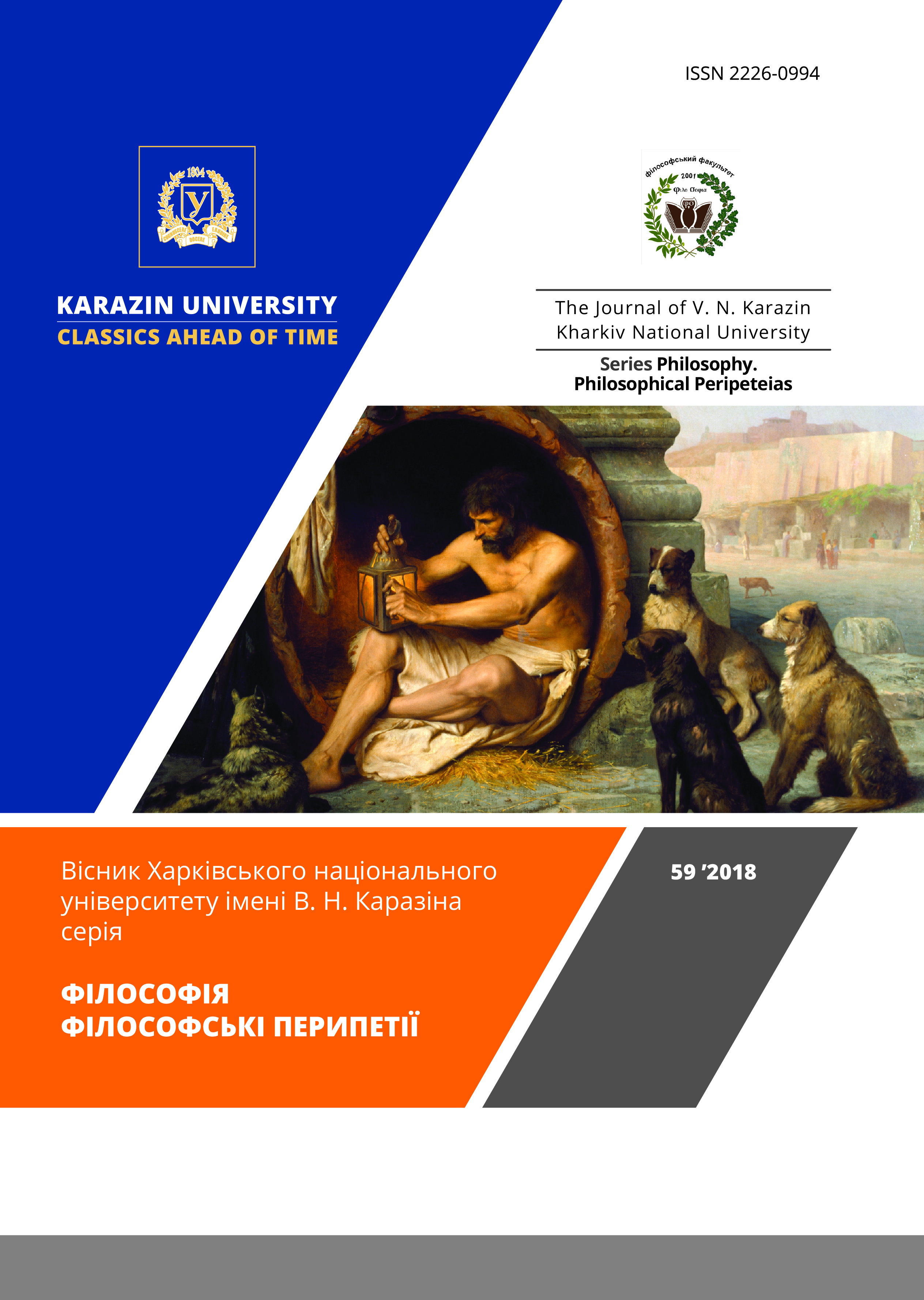SPECULATIVE POSTHUMANISM: NATURALIZATION AND VITALIZATION
Abstract
The article considers speculative posthumanism as an actual approach in researching posthuman being condition. The article examines the influences of critical posthumanism and speculative realism on speculative posthumanism and at the same time, it argues the originality of speculative posthumanism, which consists in becoming divergential life-forms and their events. Trends, which significantly impacted on critical posthumanism and became its component parts of such as deconstruction, deleuzian conception and so on are considered in the article as a background for speculative posthumanism and are naturalizing and vitalizing. For example, rhizome is understood as a biological network of wide human descendants that are appropriate to human and nonhuman traits something like a human centipede. Thus principal excess of living in its immanence is stressed and the living is been considering as a specter or plenum, which resists to any metaphysical bounds. Instead of a metaphysical vitalism is used a strategic vitalism in the context of which multiplicity is been structuring fractally or aleatory, mixing human and non-human, digital or animal and so on, traits. Therefore, the article compares philosophical naturalism and vital realism, which in object-oriented ontology context deals with even non-living entities. Acceleration and singularity in such a case imply the dissipation of intensities in the death drive movement which is understanded as a (w)holeness and plexivity from templexity to teleoplexity. Thus, a living appears as a being-nothing, the form of form, the creation of creation. The article draws a contemporary conception of posthuman in the speculative posthumanism context as an ontogically uncertain one in principal. This article will be useful for developing a theoretical framework the realizing of posthuman being.
Downloads
References
Alexandre, L., & Besnier, J.-M. (2016). Les robots font-ils l’amour? Le transhumanisme en 12 questions. Paris: Dunod.
Behler, E. (1996). The Contemporary and the Posthumous. Roundtable Discussion. Surfaces, VI (102), 5–42. Retrieved from http://www.pum.umontreal.ca/revues/surfaces/vol6/behler.html.
Hickman, S. C. (2014). David Roden’s Speculative Posthumanism and the Future of Humanity (Part 2). Retrieved from https://socialecologies.wordpress.com/2014/10/21/david-rodens-speculative-posthumanism-the-future-of-humanity-part-2.
Land, N. (2012). Fanged Noumena. Collected writings 1987–2007. UK: Urbanomic; Sequence Press.
Larvalsubjects. (2008). Strategic Vitalism and the Wilderness. Retrieved from https://larvalsubjects.wordpress.com/2011/09/21/strategic-vitalism-and-the-wilderness.
Roden, D. (2010). Deconstruction and Excision in Philosophical Posthumanism. Journal of Evolution and Technology, 21 (1), 27–36.
Roden, D. (2006). Naturalising Deconstruction. Continental Philosophy Review, 38 (1–2), 71–88. doi: https://doi.org/10.1007/s11007-005-9004-z.
Roden, D. (2015). Posthuman Life: Philosophy at the Edge of the Human. New-York, London: Routledge.
Thaker, E. (2010). After life. Chicago, London: University Of Chicago Press.
Authors who publish with this journal agree to the following terms:
- Authors retain copyright and grant the journal right of first publication of this work under the terms of a license Creative Commons Attribution License 4.0 International (CC BY 4.0).
- Authors are able to enter into separate, additional contractual arrangements for the non-exclusive distribution of the journal's published version of the work (e.g., post it to an institutional repository or publish it in a book), with an acknowledgement of its initial publication in this journal.
- Authors are permitted and encouraged to post their work online (e.g., in institutional repositories or on their website) prior to and during the submission process, as it can lead to productive exchanges, as well as earlier and greater citation of published work.






3.gif)




